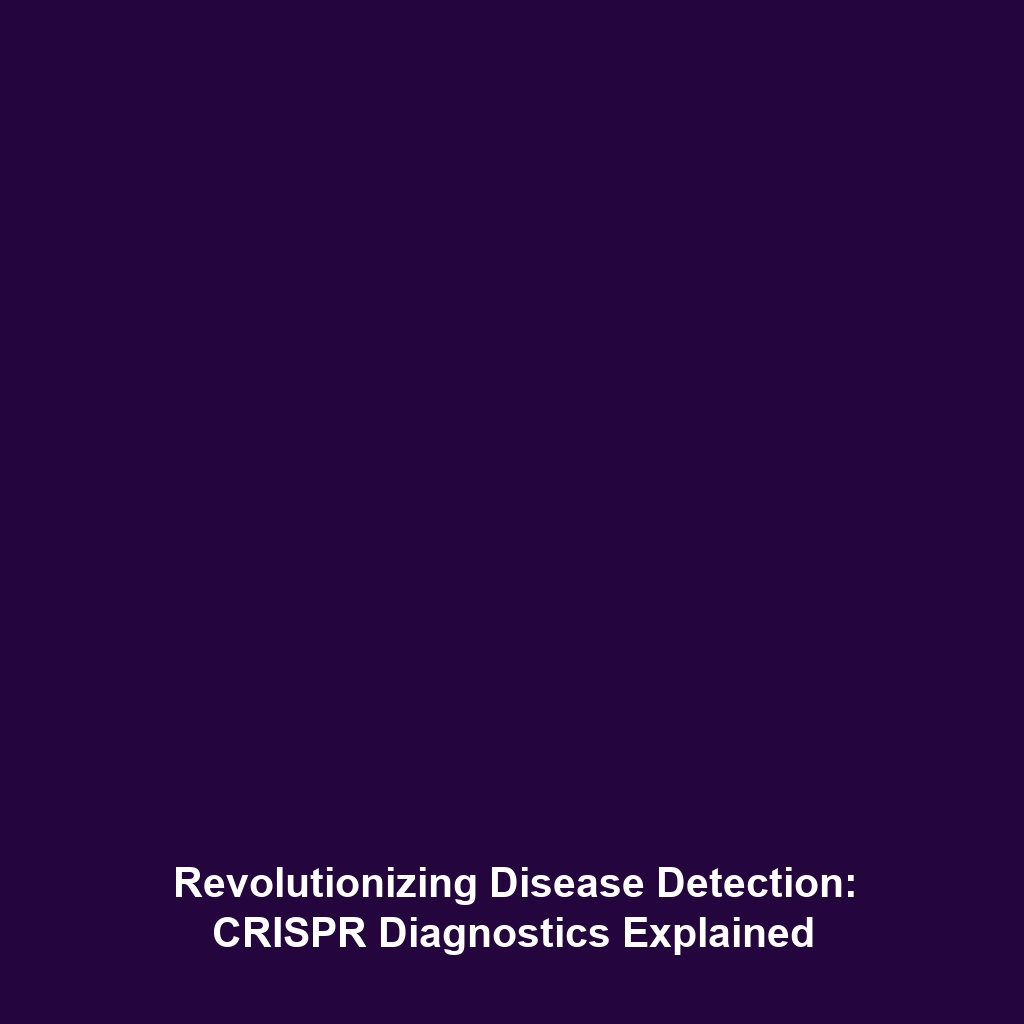How CRISPR Works
CRISPR, short for Clustered Regularly Interspaced Short Palindromic Repeats, is a groundbreaking technology that has revolutionized gene editing. Understanding how CRISPR works is crucial for grasping its significant implications in various fields, including medicine, agriculture, and genetics. Through its precise and efficient mechanism, CRISPR has become a cornerstone in the realm of CRISPR gene editing, enabling scientists to make specific changes to DNA in living organisms.
Key Concepts
To fully appreciate how CRISPR works, it is essential to understand some of its key concepts and principles:
- Guide RNA (gRNA): The gRNA is a short synthetic RNA that is designed to find and bind to a specific DNA sequence.
- Cas9 Protein: Cas9 is an enzyme that acts like a pair of molecular scissors, cutting the DNA at the targeted location specified by the gRNA.
- DNA Repair Mechanisms: Once the DNA is cut, the cell’s natural repair processes take over, allowing researchers to introduce new genetic material or disable genes.
Applications and Real-World Uses
The applications of how CRISPR works in the field of CRISPR gene editing are vast and transformative:
- Medical Research: CRISPR is used to develop therapies for genetic disorders such as sickle cell disease and cystic fibrosis.
- Agricultural Improvements: The technology allows for the genetic enhancement of crops, increasing resistance to pests and diseases.
- Biological Research: CRISPR is vital for understanding gene functions and interactions, paving the way for innovative treatments and diagnostics.
Current Challenges
Despite its potential, several challenges of how CRISPR works must be addressed:
- Off-Target Effects: Unintended DNA changes can occur, leading to potential side effects.
- Ethical Concerns: The ability to alter human embryos raises significant ethical and moral questions.
- Regulatory Hurdles: Navigating the complex regulatory landscape can slow down research and application.
Future Research and Innovations
The future of how CRISPR works is promising, with ongoing research and innovations expected to enhance its capabilities:
- Next-Generation CRISPR: Innovations such as CRISPR-based gene drives could enable more effective species control.
- Base Editing: A new technique that allows for precise editing of DNA without cutting the double helix, minimizing off-target effects.
- Therapeutic Applications: Continued development promises new treatments for diseases previously thought untreatable.
Conclusion
In summary, understanding how CRISPR works is fundamental to the future of CRISPR gene editing. Its revolutionary ability to transform genetic research opens new avenues for medical advances and agricultural innovation. As challenges persist, the promise of CRISPR technology continues to grow and inspire research. For more insights on the implications of CRISPR technology, explore our articles on gene editing methodologies and ethical considerations in biotechnology.









